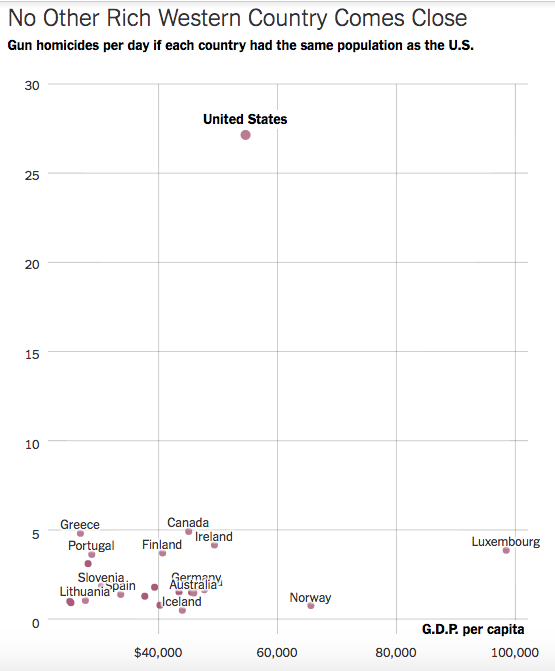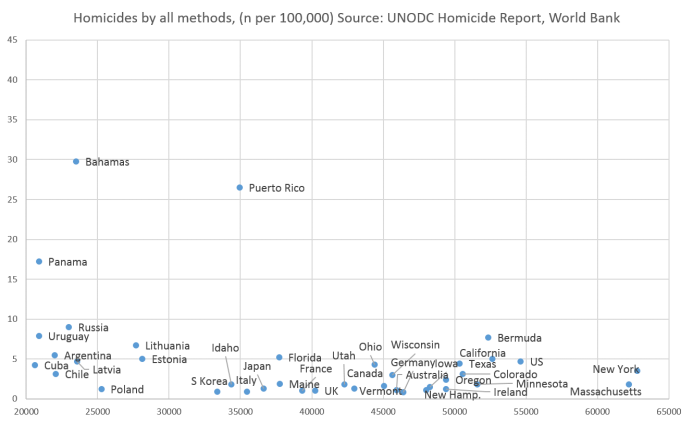As we fall subject to the myriad of statistics that come pouring from news sources and politicians, we must stop and think about more than just the numbers and percentages. What is the framing of the fact really saying and is it really generating the true meaning of the number? Am I really absorbing the entire context behind a statistic or simply the surface-level rhetorically-aimed information that a politician or campaign wants me to believe?
A New York Times article posted June 2016, “Compare These Gun Death Rates: The US Is in A Different World”, covers the homicide rates in the United States in relation to other countries around the world. Blogger for Mises Wire Ryan McMaken describes this “tactic” of gun control advocates to incorrectly frame data in a way that can create a false stance in regards to the issue of gun rights in the country.

The Times article depicts a scale in which a number of countries are plotted on an axis in relation to their respective number of homicides by firearms. The US is in fact demonstrated as a far outlier with a high number. Though, McMaken attempts to debunk this depiction in demonstrating what a graph would show if instead countries were compared against overall homicide rates. He argues, that while the countries with increased legal ownership of firearms definitely has increased homicides due to firearms, they do not necessarily have overall increased general homicides. His point is that firearms also prevent homicides.

Through his research and efforts, McMaken attempts to describe the powerful phenomenon of the way that media rhetoric can impact our perception of these statistics and graphs. As a flippant reader and less context-aware reader of the New York Times, a simple gloss of the article would lead one to think of the “loose” gun control of the US as an incredibly dangerous and lethal component of our laws. In another frame, an opinion could drastically change. The persuasive ability of our definition of “gun homicides” vs. “homicides” in its very simple distinction has a powerful effect on the way that we as citizens can comprehend our belief in the issue and current state of the country. This raises even more interesting questions about the way that we intentionally listen to the policies describes by our candidates amidst this coming election which greatly points to a gun control clash.

